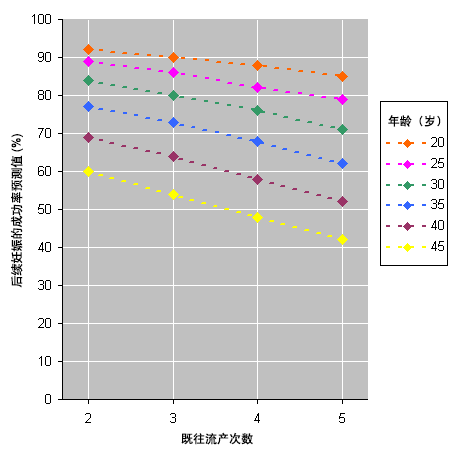复发性流产是指 2 次或 2 次以上临床妊娠失败(即:通过超声或组织病理学确认)。[1]Practice Committee of American Society for Reproductive Medicine. Definitions of infertility and recurrent pregnancy loss: a committee opinion. Fertil Steril. 2013;99:63.http://www.ncbi.nlm.nih.gov/pubmed/23095139?tool=bestpractice.com 在所有生育能力正常尝试怀孕的夫妇中,复发性流产的发病率约为1%,与之相比,在所有怀孕的人群中,散发性非连续性流产发生率约为15%-20%。[2]Stirrat GM. Recurrent miscarriage. Lancet. 1990;336:673-675.http://www.ncbi.nlm.nih.gov/pubmed/1975862?tool=bestpractice.com 流产包括任何在胚胎可存活的孕周前终止的妊娠,目前定义为孕 24 周末以前终止。 妊娠 12 周末前终止者称为早期流产,妊娠 13 周至不足 24 周终止者称为晚期流产。
阅读更多评估可以从 2 到 3 次连续性流产后开始,因为在有 2、3 次或更多次流产的患者中,病因流行率相似。[3]Habayeb OM, Konje JC. The one-stop recurrent miscarriage clinic: an evaluation of its effectiveness and outcome. Hum Reprod. 2004;19:2952-2958.http://humrep.oxfordjournals.org/cgi/content/full/19/12/2952http://www.ncbi.nlm.nih.gov/pubmed/15388685?tool=bestpractice.com 尽管有各种检查,但仍有 50% 以上的复发性流产病例找不出明显病因。[4]Quenby SM, Farquharson RG. Predicting recurring miscarriage: what is important? Obstet Gynecol. 1993;82:132-138.http://www.ncbi.nlm.nih.gov/pubmed/8515913?tool=bestpractice.com 尽管如此,约有 70% 未找到病因的患者可在随后的妊娠成功分娩活产儿,这取决于女性的年龄以及之前流产的次数。[3]Habayeb OM, Konje JC. The one-stop recurrent miscarriage clinic: an evaluation of its effectiveness and outcome. Hum Reprod. 2004;19:2952-2958.http://humrep.oxfordjournals.org/cgi/content/full/19/12/2952http://www.ncbi.nlm.nih.gov/pubmed/15388685?tool=bestpractice.com[4]Quenby SM, Farquharson RG. Predicting recurring miscarriage: what is important? Obstet Gynecol. 1993;82:132-138.http://www.ncbi.nlm.nih.gov/pubmed/8515913?tool=bestpractice.com [Figure caption and citation for the preceding image starts]: 根据年龄和既往流产史预测下次妊娠的成功率BMJ Group编制;数据来源:Brigham SA, et al. Hum Reprod. 1999; 14: 2868-2871. [Citation ends].
[Figure caption and citation for the preceding image starts]: 根据年龄和既往流产史预测下次妊娠的成功率BMJ Group编制;数据来源:Brigham SA, et al. Hum Reprod. 1999; 14: 2868-2871. [Citation ends].
与复发性流产明确相关的因素包括染色体异常、抗磷脂综合征、一些子宫结构异常、宫颈机能不全及易栓症。然而,有以上大多数情况的患者在治疗后妊娠,其流产的风险是否降低并没有得到明确的证实。针对复发性流产其他可能相关因素的争论也很多,这些因素包括免疫学因素、其他的子宫畸形(如,双角子宫和纵隔子宫)以及内分泌因素。目前很需要高质量及方法学可靠的研究指导这些患者的处理。
危险因素
母亲年龄的增加会降低成功活产的概率。既往有两次流产史的 20 岁女性,下次妊娠成功的几率是 92%,而针对同样情况的 45 岁女性,下次妊娠成功的几率只有 60%。[5]Brigham SA, Conlon C, Farquharson RG. A longitudinal study of pregnancy outcome following idiopathic recurrent miscarriage. Hum Reprod. 1999;14:2868-2871.http://humrep.oxfordjournals.org/cgi/content/full/14/11/2868http://www.ncbi.nlm.nih.gov/pubmed/10548638?tool=bestpractice.com
父亲的年龄同样也起重要作用。精子出现染色体异常的频率随年龄增长而增加。独立于母亲年龄这一因素,父亲年龄超过40岁与父亲年龄介于25至29岁相比,出现流产的概率为6:1。[6]Kleinhaus K, Perrin M, Friedlander Y, et al. Paternal age and spontaneous abortion. Obstet Gynecol. 2006;108:369-377.http://www.ncbi.nlm.nih.gov/pubmed/16880308?tool=bestpractice.com 高龄夫妻的妊娠率及妊娠结局均最差。[3]Habayeb OM, Konje JC. The one-stop recurrent miscarriage clinic: an evaluation of its effectiveness and outcome. Hum Reprod. 2004;19:2952-2958.http://humrep.oxfordjournals.org/cgi/content/full/19/12/2952http://www.ncbi.nlm.nih.gov/pubmed/15388685?tool=bestpractice.com
初孕妇及之前所有妊娠均成功的女性发生流产的风险仅为 5%,而既往有流产史的女性,发生流产的风险为 24%。[7]Regan L, Braude PR, Trembath PL. Influence of past reproductive performance on risk of spontaneous abortion. BMJ. 1989;299:541-545.http://www.pubmedcentral.nih.gov/articlerender.fcgi?tool=pubmed&pubmedid=2507063http://www.ncbi.nlm.nih.gov/pubmed/2507063?tool=bestpractice.com 其他研究同样显示,随着既往流产次数的增加,流产率有增加趋势。[5]Brigham SA, Conlon C, Farquharson RG. A longitudinal study of pregnancy outcome following idiopathic recurrent miscarriage. Hum Reprod. 1999;14:2868-2871.http://humrep.oxfordjournals.org/cgi/content/full/14/11/2868http://www.ncbi.nlm.nih.gov/pubmed/10548638?tool=bestpractice.com[8]Ogasawara M, Aoki K, Okada S, et al. Embryonic karyotype of abortuses in relation to the number of previous miscarriages. Fertil Steril. 2000;73:300-304.http://www.ncbi.nlm.nih.gov/pubmed/10685533?tool=bestpractice.com 因此,流产的风险与既往妊娠结局直接相关。
复发性流产会给患者带来很大压力,所以在进行医学研究的同时,应当提供合适的治疗、患者教育,咨询以及支持。

